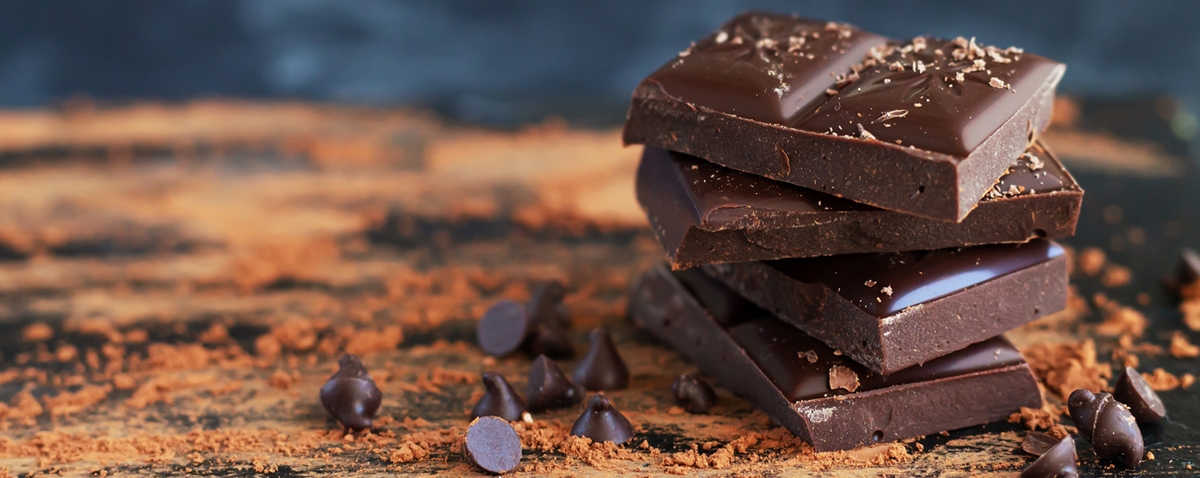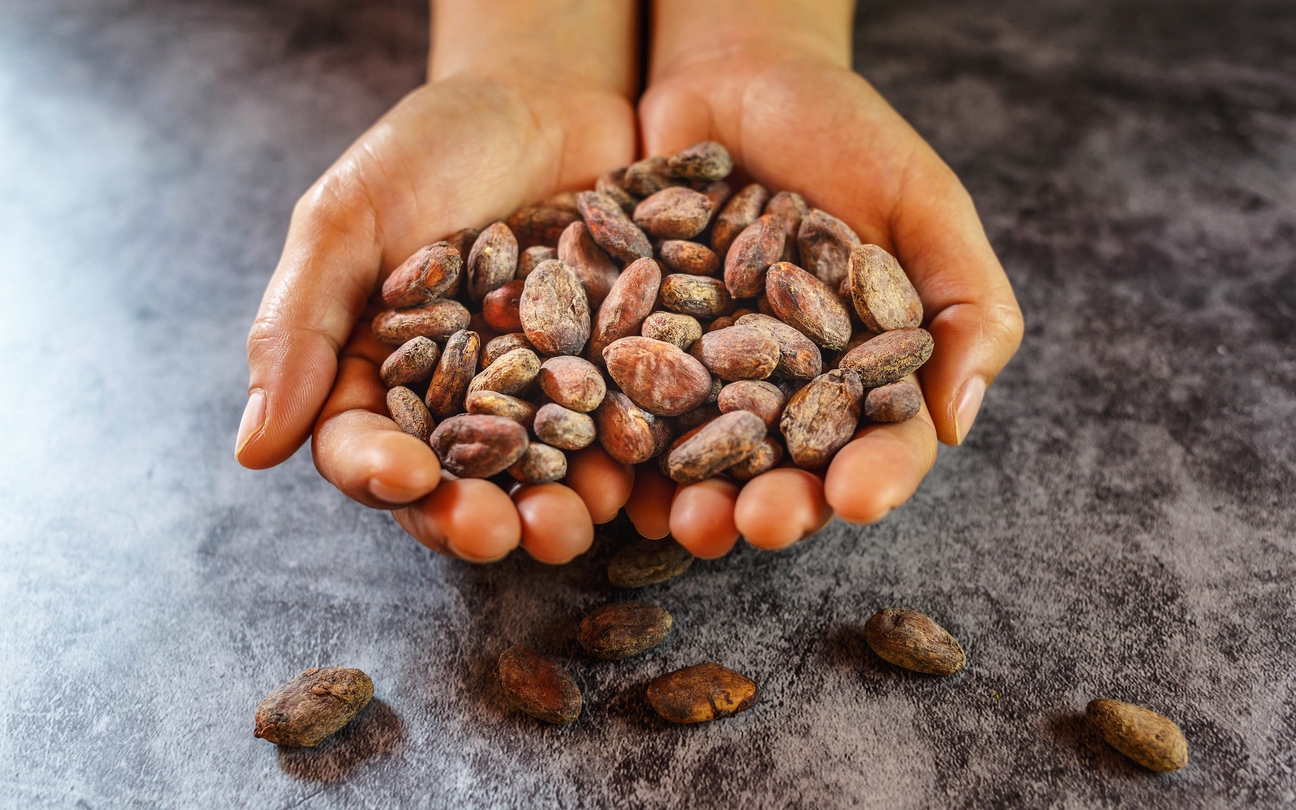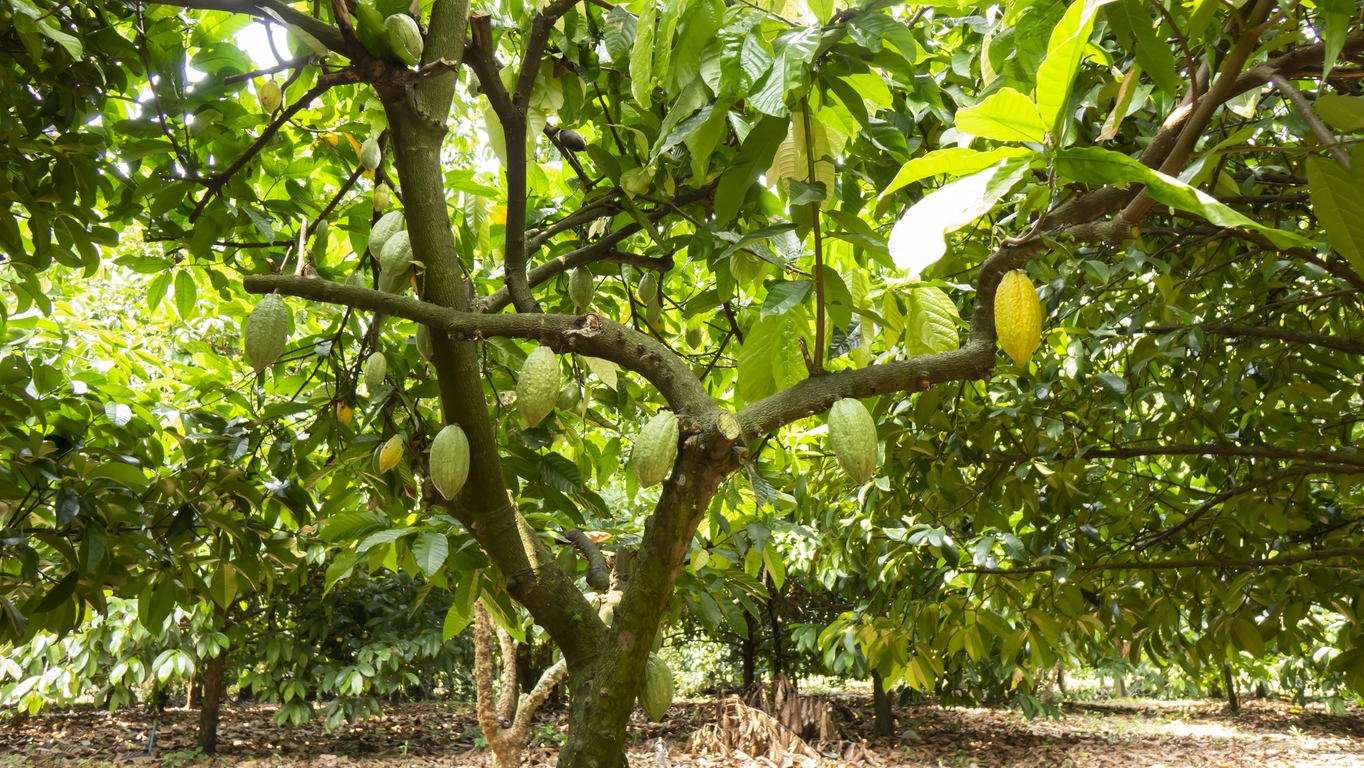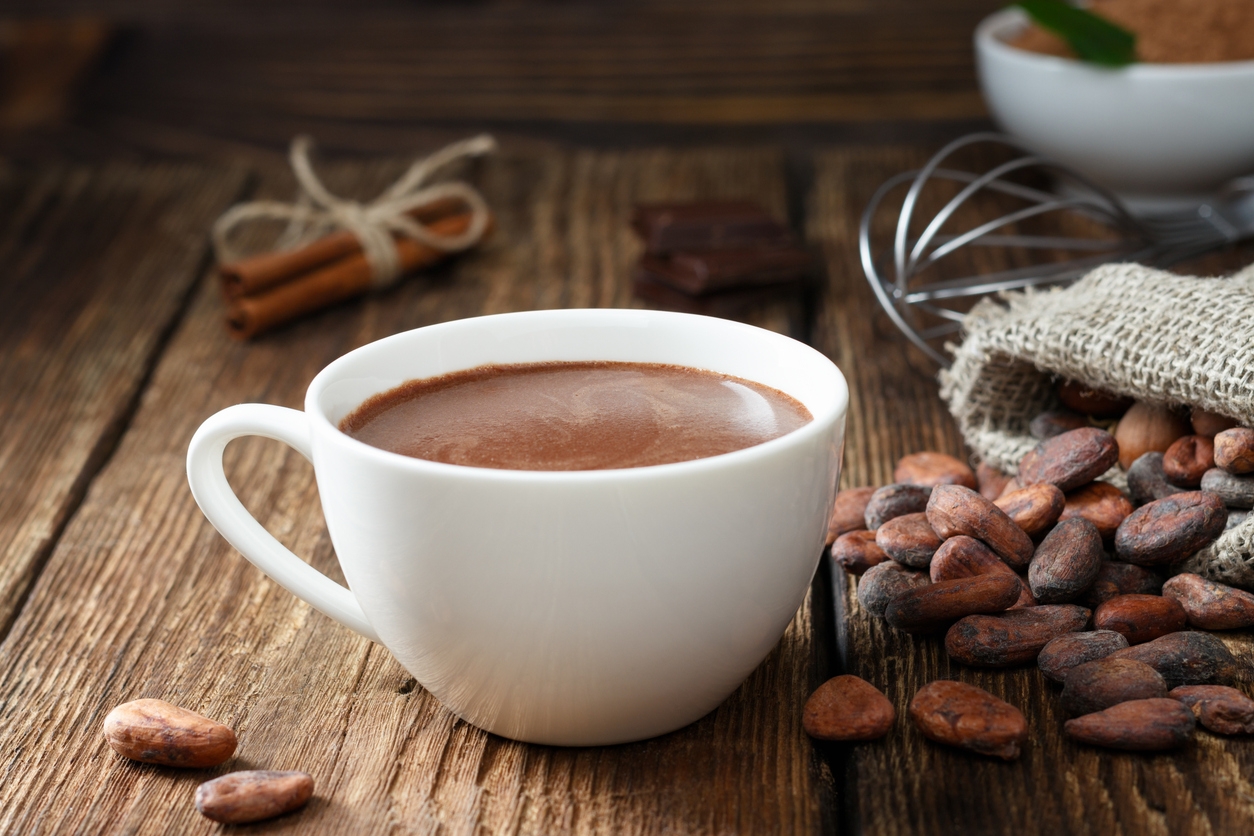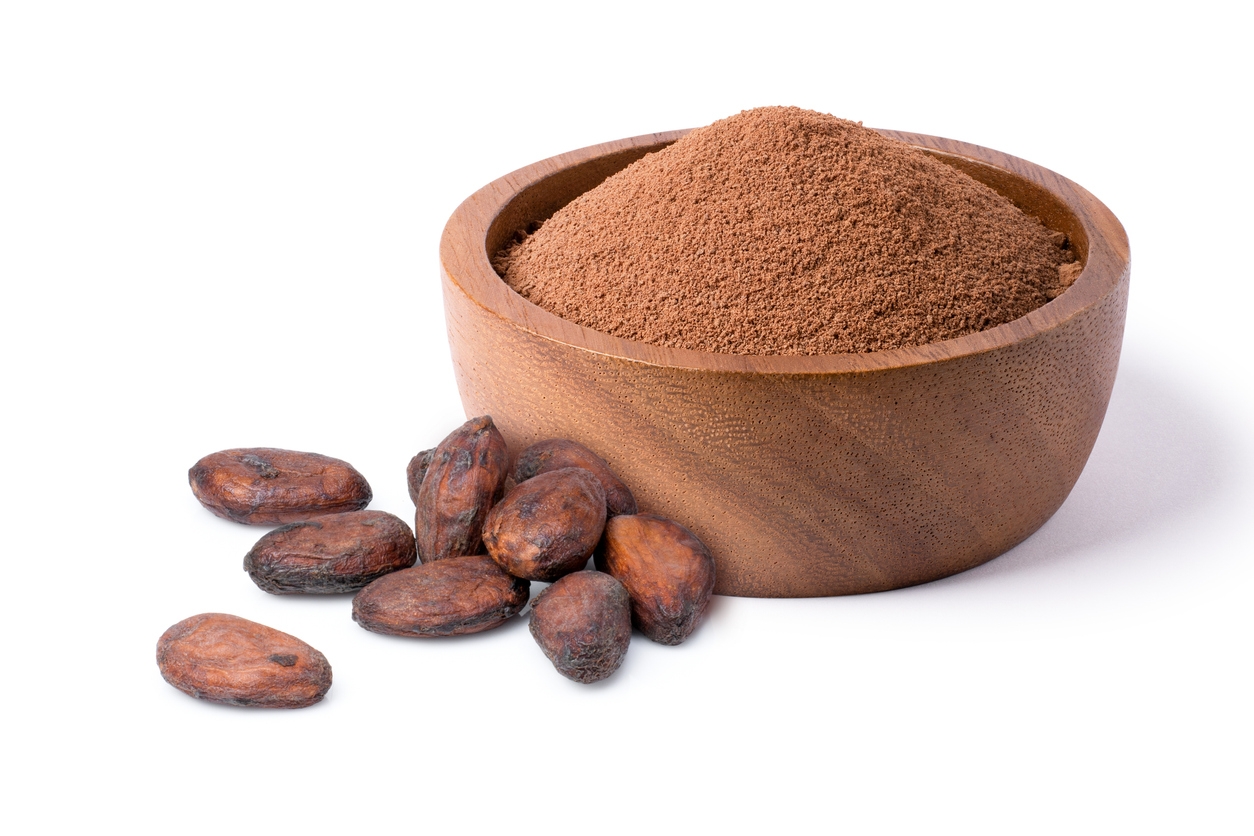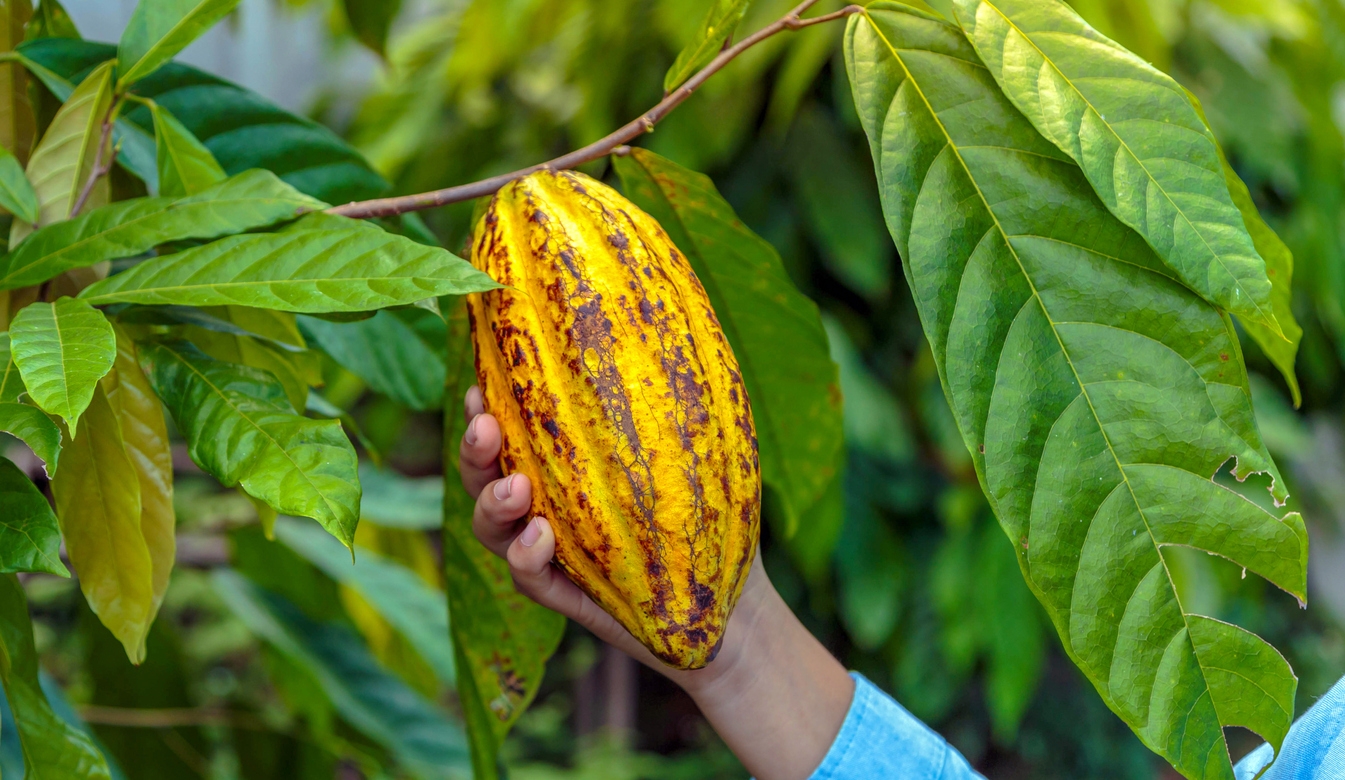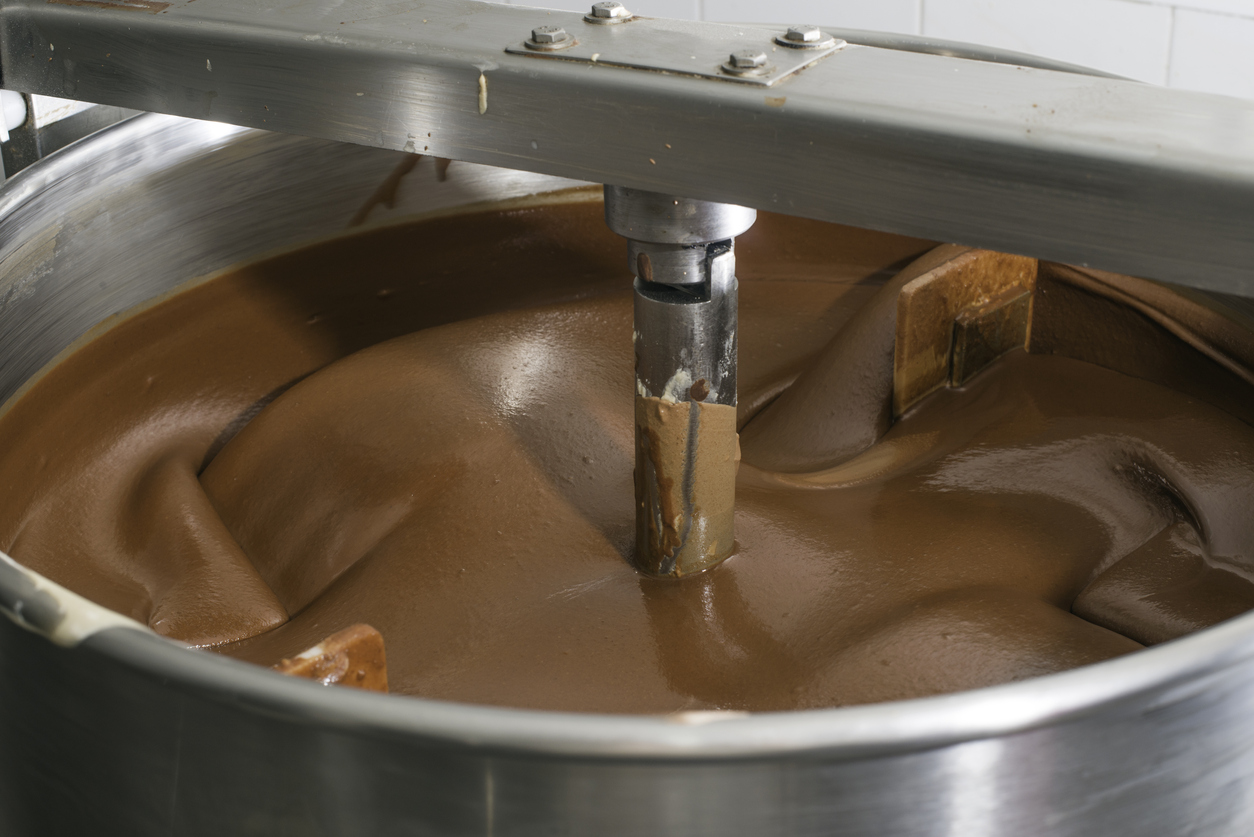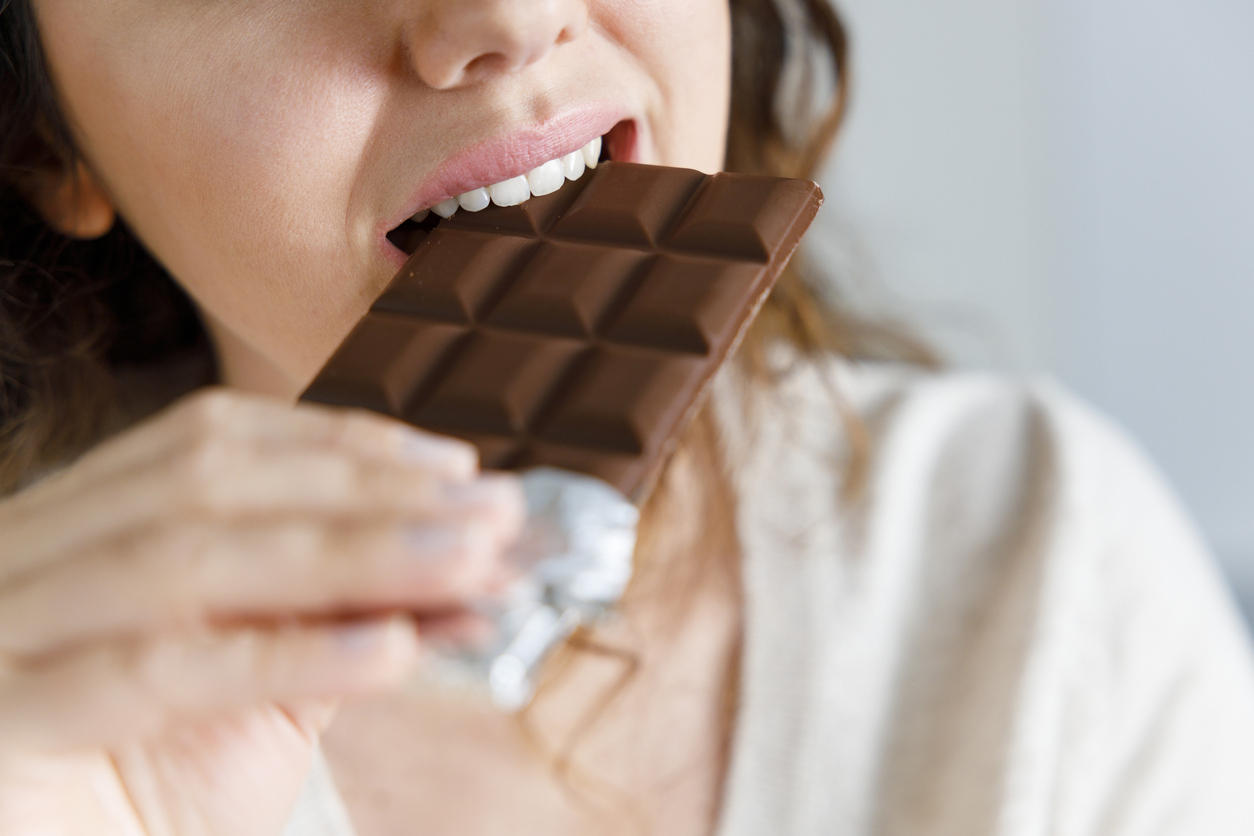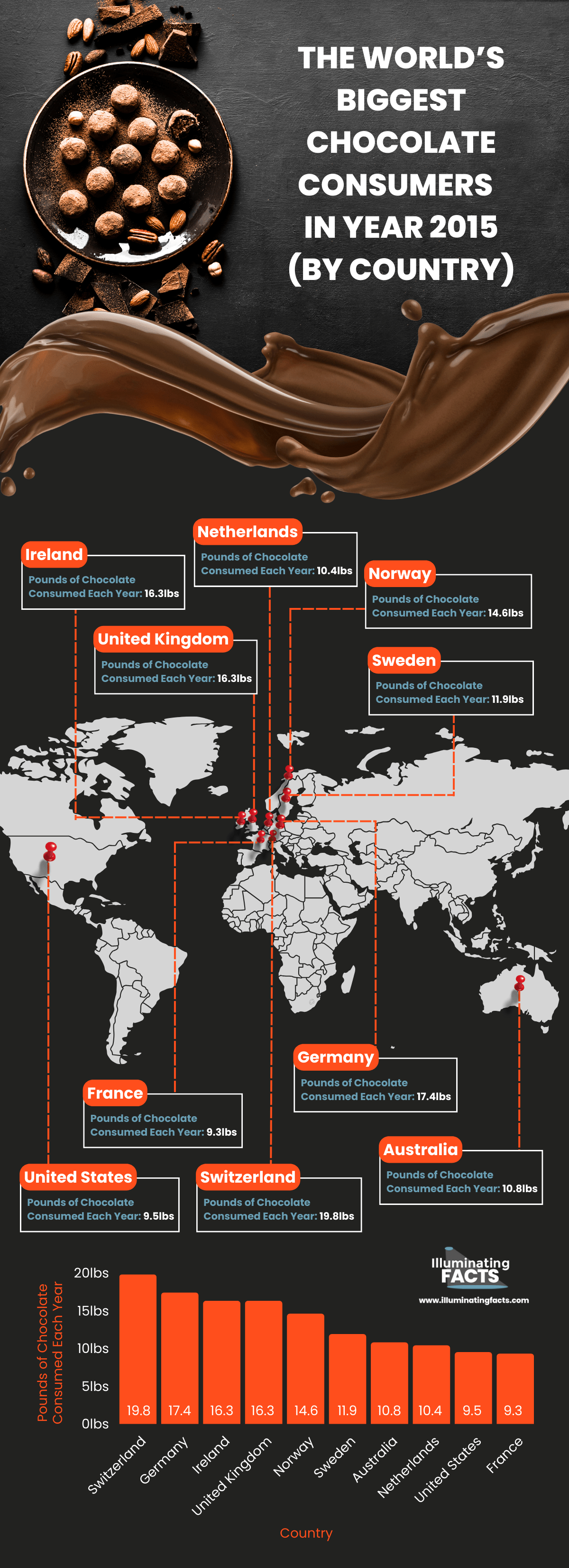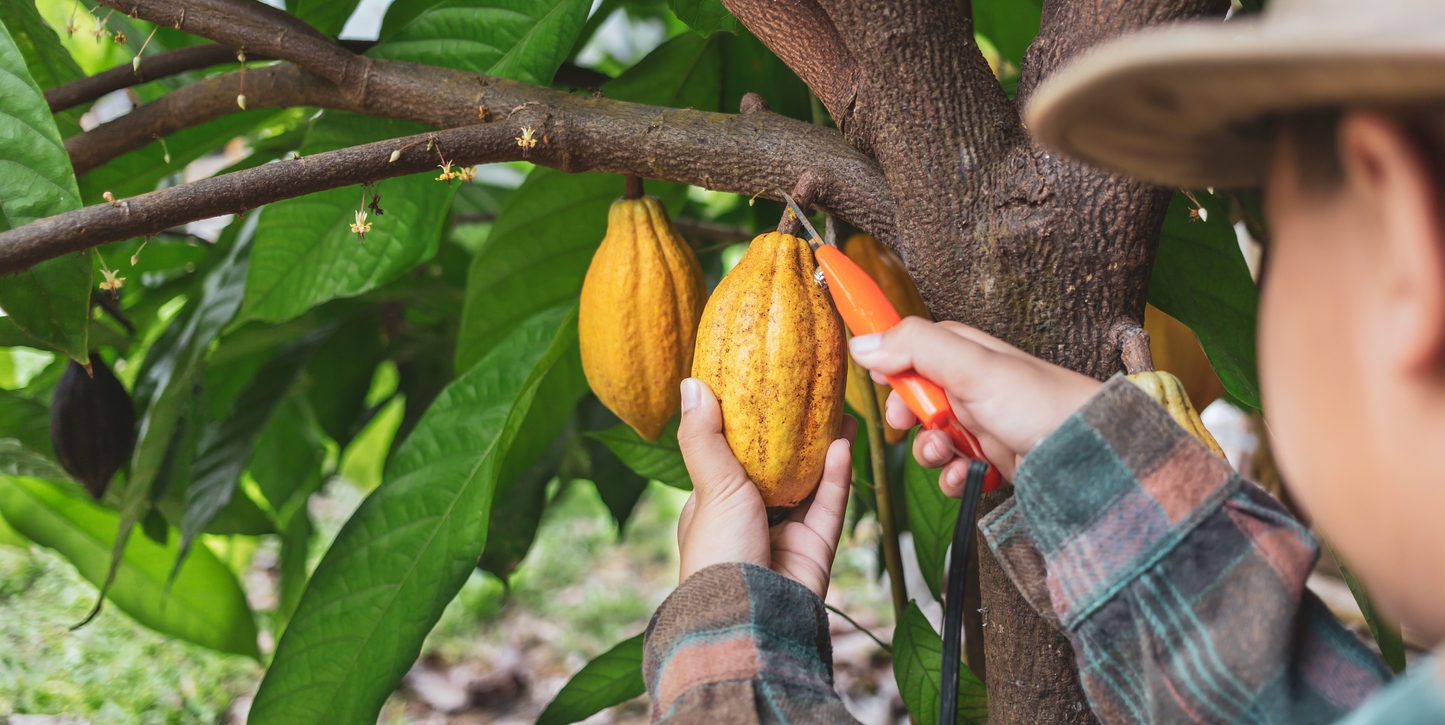Chocolate is a universally loved “sweet” that comes in all shapes and sizes. This delectable ingredient can be found in candy, cakes, pies, ice cream, bread, and drinks. Chocolate helps us celebrate almost every major holiday, and we can usually give them to loved ones on Valentine’s Day or Christmas so that they will know how much we appreciate them.
Although chocolate is associated with all things sweet, the ingredient on its own is actually quite bitter, and its bitterness is typically lowered by mixing sugar and milk. To know more about this ingredient and how it became popular over the years, here are the origins of chocolate.
The Origins of Chocolate
Chocolate comes from the fruit of cacao trees. These cacao trees are native to different parts of Central and South America, and it is believed that the cacao fruit (often called pods) would have beans that are dried and roasted in order to make cocoa beans, which are then mixed with warm water to make a drink. Historians speculate that the process of using cocoa beans to make drinks was developed by the Olmecs around 1500 BC. [1]
Cocoa Beans of the Olmecs
The Olmecs are regarded as the first major civilization in Mexico that occupied the Gulf of Mexico from 1600 to 400 BC. Pieces of evidence that support the theory that the Olmecs developed cocoa drinks were the Olmec pots that have traces of theobromine, a compound that is typically found in cocoa beans and tea leaves.
The Mayans and Chocolate
The Olmec tradition of using cocoa beans to make drinks was then passed down to the Ancient Mayans, which were the people that belonged to the Maya civilization that lived in the Maya Region (now occupied by Guatemala, Belize, and the southeastern section of Mexico). The Maya civilization is believed to have begun in 250 CE and ended in 1697 CE. Besides being a popular drink for the Ancient Mayans, the mixture of warm water and cocoa beans is also considered holy and has been utilized as an important drink for ceremonies. [2]
The Aztecs and Chocolate
The Aztecs would be the next civilization to adopt the cocoa drink. The Aztecs were the people that lived in Central Mexico from 1300 to 1521, so they basically lived around the same time period as the Mayans, although the Aztecs were much more short-lived. Much like the Mayans, the Aztecs saw the cacao tree and cocoa beans as holy or sacred and would often consume and offer them during ceremonies or rituals.
It is the Aztecs that were responsible for naming the product of cocoa beans “xocolatl,” which would later become “chocolate” in English. While the Mayans have made cocoa beans available for everybody, the Aztecs have primarily reserved most of the cocoa beans for the upper-class people, although there are a few low-class families that receive batches of the beans occasionally and use them to make drinks for weddings and other special events. [1]
Hot Chocolate in Spain
After the Spanish conquest of Central and South America that put an end to the Mayan civilization in 1697 CE, Spanish conquistadors and their crew that traveled by ships in the Americas were introduced to the cocoa bean drink by the locals of the Mayan and Aztec civilizations. According to historians, it was the Spanish conquistador named Hernan Cortes who visited the Aztec king Montezuma. Montezuma then offered him a banquet that included a chocolate drink. [2]
Unfortunately, Montezuma mistook Hernan Cortes as a reincarnated deity, and this reverence led to the fall of the Aztec Empire in 1521. Hernan Cortes would develop a liking for the chocolate drink offered to him, and historians believed that he had a stack of cocoa beans in tow during his trip back to Spain, and he would keep the recipe of the chocolate drink a secret and only told it to a few people that are connected or affiliated to the Spanish court.
Just a few years after Hernan Cortes’ conquest of Central America, the hot chocolate drink became very popular among the people of the Spanish court. When New Spain was established in 1521 on the former lands of the Aztec civilization, Spain began to ship cocoa beans from New Spain to Spain until they eventually were able to import cocoa beans to other countries in 1585.
Chocolate in Europe
Italy and France were two countries that bought cocoa beans in very large batches from Spain during that time as the hot chocolate drink became more and more popular throughout Europe. However, during the first years of chocolate’s introduction in Spain and other European countries, many people described the chocolate drink to be very bitter and unpleasant.
But, when chocolate is mixed with cane sugar and honey, it becomes much more pleasant to taste. The chocolate and cane sugar/honey mixture would be the one that helped popularize the chocolate drink in Europe. Other ingredients like cinnamon, spices, and flavorings were later added to hot chocolate to give it more flavor.
Chocolate in America
In the 1640s, cocoa beans were imported to Florida (a state in the southeastern portion of the US) from Spain. Then, from Florida, the popularity of chocolate slowly spread throughout North America from the 1650s up to the 1770s. By the early 1770s, North America became one of the best regions for importing chocolate because of how popular the ingredient was among the region’s people.
Powdered Chocolate and the Chocolate Bar
In 1828, a Dutch chemist by the name of Coenraad van Houten found a method to transform chocolate into powder form. In van Houten’s method, he removed half of the natural fat from chocolate liquor and then treated it with alkaline salts that forced that liquor to solidify and have a less bitter flavor. Besides having a better flavor for those that don’t like the bitterness of cocoa, powdered chocolate also has a much longer shelf-life. The method developed by van Houten would eventually become known as “Dutch processing” and powdered chocolate as “Dutch cocoa.” [1]
Powdered chocolate would then pave the way for the creation of solid chocolate bars, which is said to have been invented by Joseph Storrs Fry, the owner of a now-defunct British chocolate company called J.S. Fry & Sons. It was at the company’s factory in 1847 that the first chocolate bar was produced, and it was achieved by mixing powdered chocolate with melted cacao butter (the natural fats of cocoa beans) and pouring them on a mold. Shortly after the production of the first chocolate bar, Fry’s company was able to mass produce their chocolate bar by manufacturing molds that were suitable for large-scale production.
Milk Chocolate
Chocolate bars became very popular after J.S. Fry & Sons sold their bars on a large scale in England. The popularity of chocolate bars inspired other companies to make their own version of the delectable bar, and one of those companies is the Nestlé Company, owned by a Swiss-German confectioner named Henri Nestlé.
The company is primarily known for popularizing the milk-condensation process that makes milk thicker and sweeter. This process allowed a chocolatier and friend of Nestlé named Daniel Peter to finalize the milk chocolate formulation that he had developed in 1876. [1] Peter and Nestlé would then form a partnership to create the first milk chocolate bar, which was much sweeter than a regular chocolate bar and would eventually become one of the most known forms of chocolate that kids and adults enjoy eating.
Military Chocolate
Because of its long shelf-life and portability, chocolate became one of the most popular food items for soldiers during the Revolutionary War from 1775 to 1783. Chocolate, which was utilized to make stimulating drinks back then, was included in soldiers’ ration and would sometimes even be used to pay soldiers as a form of wage. [2]
The importance of chocolate for military purposes became even more apparent during World War II when chocolate bars made by an American chocolate manufacturer called The Hershey Company were considered one of the best food items in soldiers’ ration because of their weight, size, and shelf-life. Today, chocolate bars are still included in some countries’ military rations.
Modern Chocolate Production
Because of how in-demand chocolate is every year, many chocolate-making companies develop ways to mass-produce chocolate while simplifying the process to create large batches of chocolate bars and candies faster. Here is a step-by-step process of how companies make their chocolate.
Cultivation
The process of making chocolate bars and candies starts with the cultivation of cacao pods from cacao trees. The cacao trees usually grow about 20 degrees north and south of the Equator. [5] So, these trees can only grow and thrive in environments that have relatively hot temperatures but are still experiencing plenty of rain, which is common for tropical areas near the Equator.
Harvesting
Once the cacao pods are ripe, then it is time for them to chop off the cacao trees and send them to chocolate-making factories. When the cacao pods are ripe, their exterior has a yellow-orange color and is fairly large in size. Cacao pods are usually harvested about two times a year, although some farms would harvest them in batches so that they will have a constant supply of ripe cacao pods for every quarter of the year. Once the cacao pods are chopped off, the seeds (cocoa beans) inside them are extracted and placed in boxes or baskets.
Fermentation
The next step involves fermenting the cocoa beans so that their flavors will be much more developed. The cocoa beans are first cleaned by hand and are then exposed to sunlight. The original white or cream color of the beans would then turn purple after a few days of being under the light of the sun. During the fermentation process, the cocoa beans are dried on wooden boards or bamboo mats under the sun for about seven to 14 days, depending on the temperature.
Shipping
After the fermentation process, the dried cocoa beans are then placed inside sacks, and these sacks are bundled and shipped to different chocolate-making factories around the world. There are some companies that own their own cocoa farms, but there are some that just buy their cocoa supplies from other farms and plants.
Creating the Cocoa Liquor
Once the cocoa beans arrive at the factory, they are cleaned and prepared for roasting. These beans are roasted at low temperatures to give them better flavor. After roasting, the shell of the beans is peeled off to reveal the nibs, which are the meat of the beans that are used to make chocolate. The nibs are ground into cocoa liquor, and this liquor would then be placed under extremely high pressure and temperature to create two products. These two products are called cocoa butter and cocoa powder. [5]
Making Chocolate
To make chocolate, the cocoa powder is mixed with cocoa butter and sugar and then ground and kneaded to form a paste that can solidify and turn into a chocolate bar. Without milk, chocolate that is made with cocoa butter, cocoa powder, and sugar is simply called “dark chocolate” and is supposed to have a more bitter flavor compared to milk chocolate. To make milk chocolate, the cocoa powder, cocoa butter, and sugar are mixed with milk powder and then kneaded and ground to create a paste.
Conching
The chocolate paste that is produced by mixing different ingredients would then be placed inside a conching machine, which rolls, kneads, heats up, and aerates chocolate. The conching process enables the chocolate to have a smoother and creamier texture that melts in your mouth. In addition, the said process can also bring out the aroma of the chocolate better, thus making it more irresistible to eat.
Molding the Chocolate
The next step is molding the chocolate into bars or other shapes. Molding the chocolate into solid pieces requires them to be placed under a certain temperature where they wouldn’t melt, and they wouldn’t turn into solid pieces that are too hard to bite or chew on. [5] Chocolate is placed inside a mold or tray, and then they are sent to a machine that performs “tempering,” which is the process that turns that chocolate into solid pieces that are not too hard or rigid. Once the chocolate pieces are tempered, they are then transferred to a machine that wraps them in plastic or paper.
The Popularity of Chocolate Today
It is not surprising that chocolate is very popular today, as it is considered to be one of the tastiest snacks and desserts people can eat and enjoy. In fact, there are some countries that consume more chocolate compared to others. Check the graphic below that shows the world’s biggest chocolate consumers in 2015, according to Forbes and Statista. [6]
| The World’s Biggest Chocolate Consumers (By Country) | |
| Country | Pounds of Chocolate Consumed Each Year |
| Switzerland | 19.8lbs |
| Germany | 17.4lbs |
| Ireland | 16.3lbs |
| United Kingdom | 16.3lbs |
| Norway | 14.6lbs |
| Sweden | 11.9lbs |
| Australia | 10.8lbs |
| Netherlands | 10.4lbs |
| United States | 9.5lbs |
| France | 9.3lbs |
As evident in the graphic above, Europe is arguably the region that consumes the most chocolate based on how many European countries are in the top ten. Of course, it is not surprising since the modern version of chocolate was first popularized in the said region before being introduced to other countries and areas in the world. Then, the United States is in the top nine in the list because it is also home to a few of the most popular chocolate-making companies, including The Hershey Company, Cadbury, and Nestlé.
Labor Issues in the Chocolate Industry
Even though chocolate-making is one of the most profitable and successful industries in the world, there have been controversies that arose when it came to the employees and workers that the chocolate-making companies and farms hire in different countries. There were two specific countries that had labor issues in chocolate-making farms, and these countries are Ghana and Cote d’Ivoire, which actually produce more than 70% of the cocoa supply of the world. [7]
In those countries, there are whole communities in villages or towns that are hired to cultivate and harvest cocoa beans. Unfortunately, what the workers of these communities get for their hard work is below minimum wage, and there are even child laborers that are hired in these cocoa farms, which is illegal.
The labor issues that are plaguing the chocolate industry have become so severe that many nonprofit organizations have done their best to put a stop to these below-minimum-wage and child labor issues not only in Ghana and Cote d’Ivoire but also in other countries that produce chocolate. One of these organizations is the International Labor Rights Forum or ILRF, which holds global companies accountable for labor rights violations.
Fair Trade Chocolate
In order to combat labor issues like below minimum wage and child labor, nonprofit organizations encourage people to buy chocolates that are “Fair Trade Certified.” These Fair Trade Certified chocolate products, also known simply as “Fair Trade Chocolate,” are products that have been produced in farms, plantations, and factories that have ethical and sustainable practices that give proper wages to their workers while also keeping their business environment-friendly. [8]
In order for you to know if a chocolate product is Fair Trade Chocolate, you should look for the Fair Trade Certified logo or stamp on the product’s packaging, which is predominantly green and white in color.
Interesting Facts about Chocolate
- Chocolate was once used as a form of currency by the Mayan civilization. According to historians, chocolate is considered to be more valuable than gold during that time. In order to retain the value of cocoa beans, Mayans often limit how many cacao trees are grown and how many people can cultivate those trees. [3]
- It takes about 400 cocoa beans to create just one pound of chocolate.
- A cacao tree produces 30 to 60 pods of cacao pods per year. Inside these cacao pods are about 40 cocoa beans. So, it would normally take about ten or more cacao pods to make one pound of chocolate. Moreover, a cacao tree only makes about two to three pounds of chocolate per year. [3]
- Pure chocolate can sometimes be expensive because of how little chocolate each cacao tree produces every year.
- The scientific name of the cacao tree is Theobroma cacao, which is derived from the Greek words “theos,” meaning “god” and “broma,” meaning “food.” So, when you combine those two Greek words together, you can interpret the cacao tree as the “food of the gods.”
- J.S. Fry & Sons is the company responsible for introducing people to the simple concept of eating chocolate instead of drinking it. Before the invention of the solid chocolate bar, chocolate was usually consumed as a hot or cold drink.
- A Swiss chocolatier named Rudolf Lindt invented the chocolate conche machine, which mixes and aerates chocolate to give it a smoother and creamier texture compared to regular chocolate.
- White chocolate, which is the yellowish-white chocolate bar that is a favorite of some people, doesn’t really have any cacao liquor or solids in it. It instead has cocoa butter, which is derived from the natural fats of cocoa beans.
- In the 1980s, the US Army created a high-temperature chocolate bar called the “Congo Bar” that can withstand extreme heat that can get as high as 60 °C or 140 °F. This is made possible by combining chocolate with egg whites. The Congo Bar has a high melting point, so it wouldn’t melt easily when exposed to the temperatures of tropical areas and regions.
- It is believed that the Aztec king Montezuma liked chocolate so much that he drank about 50 cups of it every day on his golden chalice. [4]
Conclusion
There is no denying that chocolate is one of the tastiest snacks in history, and it also serves as one of the best ingredients to add to desserts. Chocolate has quite a rich history, and there have been many changes and developments for it that were instrumental in making the product what it is today. However, the labor issues that have plagued the chocolate industry shouldn’t be ignored, but thanks to many nonprofit organizations, these labor issues are being put to light and are being resolved step by step.
Before we end this article, here are some key points to recap on the origins and history of chocolate:
- Cocoa drinks are said to have been around since 1500 BC, and they are believed to have been invented by the Olmecs.
- The Mayan and the Aztec civilizations were responsible for popularizing the drink in Central and South America, and these civilizations often drank cocoa drinks for ceremonies, rituals, and other important events.
- The first chocolate bar was invented by the J.S. Fry & Sons company in 1847.
- The first milk chocolate bar was created through the partnership of Nestlé and chocolatier Daniel Peter in 1876.
It would be surprising if you haven’t tried a chocolate bar or candy yet, but if you really haven’t, you may need to try it for you to be able to see for yourself why it is a favorite of many. However, be sure that you don’t have any allergies to chocolate, milk, and other ingredients used to make chocolate bars.
References
[1] History.com Editors. (2022, August 10). History of Chocolate. History.com. Retrieved April 18, 2023, from https://www.history.com/topics/ancient-americas/history-of-chocolate
[2] Fiegl, A. (2008, March 1). A Brief History of Chocolate. Smithsonian Magazine. Retrieved April 18, 2023, from https://www.smithsonianmag.com/arts-culture/a-brief-history-of-chocolate-21860917/
[3] Simply Chocolate. (n.d.). 8 Fun Chocolate Facts You’ll be Glad to Know. Simply Chocolate. Retrieved April 18, 2023, from https://www.simplychocolate.com/learn-about-chocolate
[4] National Confectioners Association (n.d.). Fun Facts About Chocolate. National Confectioners Association. Retrieved April 18, 2023, from https://candyusa.com/story-of-chocolate/fun-facts-about-chocolate/
[5] Lake Champlain Chocolates. (n.d.). How is Chocolate Made from Cacao? Lake Champlain Chocolates. Retrieved April 19, 2023, from https://www.lakechamplainchocolates.com/making-chocolate/
[6] McCarthy, N. (2015, July 22). The World’s Biggest Chocolate Consumers [Infographic]. Forbes. Retrieved April 19, 2023, from https://www.forbes.com/sites/niallmccarthy/2015/07/22/the-worlds-biggest-chocolate-consumers-infographic/?sh=574ff5b24484
[7] International Labor Rights Forum. (n.d.). The chocolate industry has a century-long history of forced and child labor in the production of cocoa. International Labor Rights Forum. Retrieved April 19, 2023, from https://laborrights.org/industries/cocoa
[8] Simply Chocolate. (n.d.). 5 Important Things to Know About Fair Trade Chocolate. Simply Chocolate. Retrieved April 19, 2023, from https://www.simplychocolate.com/learn-what-is-fair-trade-chocolate

